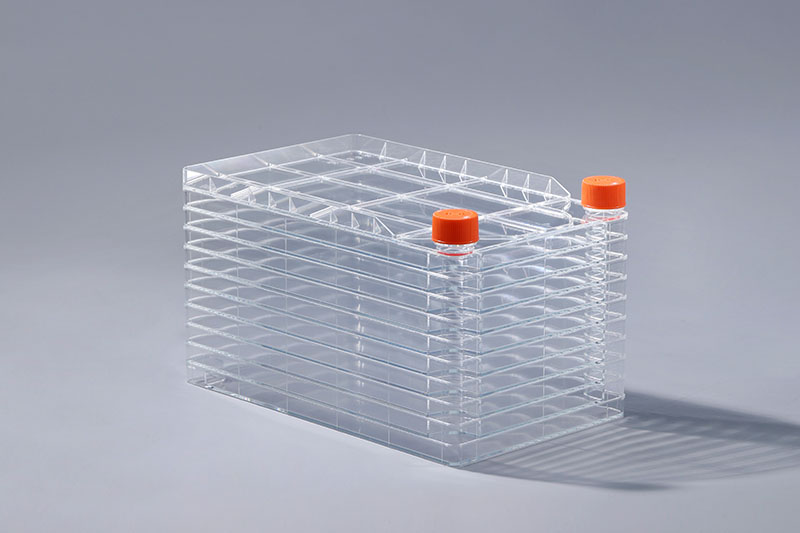Cell culture refers to a method in which cells survive, grow, reproduce and maintain their main structures and functions in a certain growth environment. Cell factories are often used for large-scale cell culture, and their caps vary depending on the environment in which they are used.
The growth environment of cells includes sterility, suitable temperature (37~38℃), osmotic pressure (260~320mmol/L), carbon dioxide and suitable pH (7.2~7.4). Cell factories generally need to use incubators and greenhouses for cell culture. According to the different use environments, the bottle caps are divided into two types: sterilizing and ventilating caps and sealing caps.
Sterilization and breathable cover: This cover has ventilation holes on the top and is mainly used in a carbon dioxide environment. The breathable cover can allow carbon dioxide in the environment to enter the cell factory and create suitable growth conditions for cell growth. In addition, this lid also has a sterilization function, mainly to prevent bacteria from entering the container, contaminating cells and preventing their normal growth.
Sealed cover: This cover has no ventilation holes and is mainly used under conditions without carbon dioxide such as incubators and greenhouses. A sealed cover can prevent the invasion of external bacteria and help create a good growth environment for cell growth.
The sterilizing and ventilating cover and sealing cover of the cell factory are used in different culture environments, which are of great significance for the safety of the environment required for cell growth. Can grow well.
The FAI climbed 5.9 percent year-on-year in the first 11 months of 2018, quickening from the 5.7-percent growth in Jan-Oct, the National Bureau of Statistics (NBS) said Friday in an online statement.
The key indicator of investment, dubbed a major growth driver, hit the bottom in August and has since started to rebound steadily.
In the face of emerging economic challenges home and abroad, China has stepped up efforts to stabilize investment, in particular rolling out measures to motivate private investors and channel funds into infrastructure.
Friday's data showed private investment, accounting for more than 60 percent of the total FAI, expanded by a brisk 8.7 percent.
NBS spokesperson Mao Shengyong said funds into weak economic links registered rapid increases as investment in environmental protection and agriculture jumped 42 percent and 12.5 percent respectively, much faster than the average.
In breakdown, investment in high-tech and equipment manufacturing remained vigorous with 16.1-percent and 11.6-percent increases respectively in the first 11 months. Infrastructure investment gained 3.7 percent, staying flat. Investment in property development rose 9.7 percent, also unchanged.
 English
English



















































